Archeology for Jean Auel fans
Archeology for Jean Auel fans, including all the archaeological sites referred to by Jean Auel in her series of books about the ice age heroine, Ayla.
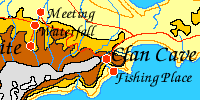 Maps of the Earth's Children Series including a map of Journeys in the Land of Painted Caves, the last book in the series.
Maps of the Earth's Children Series including a map of Journeys in the Land of Painted Caves, the last book in the series.
Maps include the true extent of the ice in the last ice age, as well as maps of The Territory of the Zelandonii, Journeys in Clan of the Cave Bear, local area around the cave in Clan of the Cave Bear, The Valley of Horses, Iron Gates map, local map of the Sharamudoi, local map of The Mammoth Hunters Lion Camp, map of Ukraine, map of The Plains of Passage, Clickable map of the Plains of Passage, Donau Mouth to First Snow from the Plains of Passage, The Encounter with the S'Armunai, Wurm and Riss Glaciation in the headwaters of the Donau (Danube), How I draw the maps.
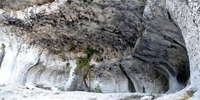 Amelana's Cave
Amelana's Cave
In Jean Auel's Land of Painted Caves, on the last part of the Donier tour, the party followed the Rhône upstream until they came to the point where the Ardèche comes in from the north west. They then followed the Ardèche upstream for four miles until they neared the gorge for which it is famous, and in which is Chauvet Cave, the Most Ancient Sacred Site. They conducted a very successful bison hunt, then continued up the Ardèche to Amelana's Cave, which is situated on the Cirque de la Madeleine. From there they went further up the Ardèche, to Chauvet Cave.
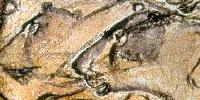 First Cave (South), the Most Ancient Sacred Site, Chapter 27 - 28 Land of Painted Caves
First Cave (South), the Most Ancient Sacred Site, Chapter 27 - 28 Land of Painted Caves
Now called Chauvet Cave, in the valley of the Ardèche River in France, it is filled with paintings, engravings and drawings created more than 30 000 years ago, of cave lions, mammoths, rhinos, bison, cave bears and horses. It contains the earliest known cave paintings, as well as other evidence of Upper Paleolithic life. A later occupation left little but a child's footprints, the charred remains of ancient hearths and carbon smoke stains from torches that lit the caves. After the child's visit to the cave 26 000 years ago, evidence suggests that the cave had been untouched until discovered in 1994. The footprints may be the oldest human footprints that can be dated accurately
 Fourth Cave South, Chapter 20 Land of Painted Caves
Fourth Cave South, Chapter 20 Land of Painted Caves
Now called les Grottes de Cougnac, the caves are near Gourdon, Lot. The site consists of two caves separated by 200 metres. The first contains many concretions, some very fine, called soda straws. The second is a decorated cave from the Paleolithic. The cave has many prehistoric paintings dated to the upper Paleolithic. Depictions include deer, megaloceros, the ibex, and mammoths as well as various schematic human figures. The paintings corresponded to at least two clearly distinct phases: one around 25 000 BP, the other about 14 000 years before the present.
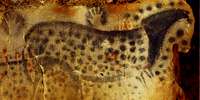 Seventh Cave South, Chapter 21 Land of Painted Caves
Seventh Cave South, Chapter 21 Land of Painted Caves
Now called Pech Merle, this is one of the few prehistoric cave painting sites in France which remain open to the general public. Extending for more than a mile from the entrance are caverns the walls of which are painted with dramatic murals from 25 000 years ago. The walls of seven of the chambers at Pech Merle have fresh, lifelike images of a woolly mammoth, spotted horses, bovids, reindeer, handprints, and some human figures. Footprints of children, preserved in what was once clay, have been found more than a kilometre underground.
 Mammoth Cave Chapter 14 Land of Painted Caves
Mammoth Cave Chapter 14 Land of Painted Caves
This is the cave that Zelandoni, Ayla and Jondalar visit on the 'mini' donier tour, on their way back from the first summer camp.
Now called La Grotte de Rouffignac, it has a length of over eight kilometres and is one of the largest painted caves in Europe. These galleries were decorated with 158 mammoths associated with woolly rhinoceroses, bison, horses and ibex.
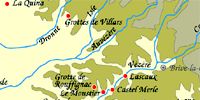
Location maps of archaeological sites and cave paintings. A new base map of archaeological sites in the south of France has been added.
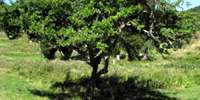
Willow Pool - The source was a spring-fed pool with a large willow hovering over it, as though protecting its birthright of water for itself and its offspring: a collection of smaller willows crowding close to the large, overflowing basin. They dismounted, took the riding blankets off the horses, and spread them out on the ground.
(Jean Auel, The Shelters of Stone, Chapter 22.)
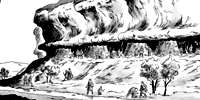
Castel-Merle, Vallon des Roches. This is called in the EC books 'Old Valley, Cave 5, self sufficiency'.
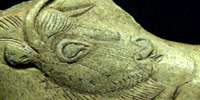
La Madeleine. This is known as 'River Front' in the EC books.
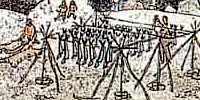
Laugerie Haute, known in the EC books as The Ninth Cave - Arts and Crafts
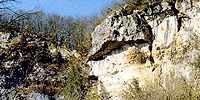
L'Abri des Marseilles, between Laugerie Haute and Laugerie Basse

The Dordogne - scene for Book 5, Shelters of Stone. Scenes from the Dordogne, cooking Clan style - preparation of ptarmigan, and using a firestone to make a fire.
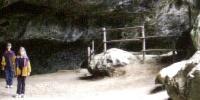
Laugerie Basse, known in the EC books as Down River - Projects
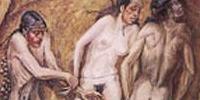
Dolni Vestonice. EC fans know this as the place of the S'Armunai, where Attaroa set herself up as despotic leader of the group.
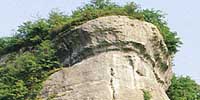
Font de Gaume in the French Dordogne. In the EC books, this is known as The Deep of Fountain Rocks, where the headland looks like the face of the Mother.
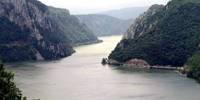 Lepenski Vir - a mesolithic site on the Donau. While this is not the exact site as described by Auel, it is in the same general area as the Sharamudoi, who consist of the Shamudoi and the Ramudoi. The Shamudoi live on the land, while the Ramudoi live on floating docks moored to the shore of the Great Mother River, and ply their boats up and down the Danube in the region known as the Iron Gates Gorge.
Lepenski Vir - a mesolithic site on the Donau. While this is not the exact site as described by Auel, it is in the same general area as the Sharamudoi, who consist of the Shamudoi and the Ramudoi. The Shamudoi live on the land, while the Ramudoi live on floating docks moored to the shore of the Great Mother River, and ply their boats up and down the Danube in the region known as the Iron Gates Gorge.
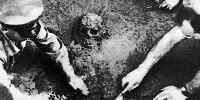
The Sungir - Sunghir - Sungaea site. Although Auel never tells us much about the Sungaea, the burial described in Plains of Passage is derived from this site, a long way away, near Moscow. Two children, aged 8 and 13, were buried head to head with elaborately decorated clothes and other jewellery.

Mezhirich. This is known as Mammoth Camp in the EC series.

Mizyn. Known to EC fans as Wolf Camp, it is located at Mizyn, in Ukraine.
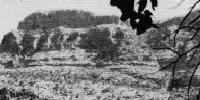
Shanidar Cave in Iraq. The Clan Cave in the EC series is located on the Crimean Peninsula, but the original was located hundreds of kilometres away in Iraq, and is a very important Neanderthal site. The skeletons corresponding to Creb and Iza are from there.
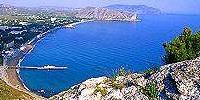
The Clan Fishing site - Sudak on the Crimean coast
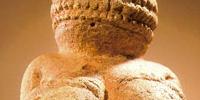
The Venus of Willendorf. This is Jondalar's sculpture of the mother.
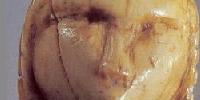
The Venus of Brassempouy. This is the sculpture of Ayla.
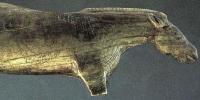
Sculpture of 'Whinney', Ayla's horse.
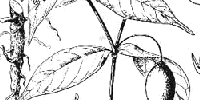
The Sacred Root -
The sacred root is not Datura, however there is reason for thinking that Jean used at least the physical form and growth habits of mandrake when she created her "sacred root". The effects, however, are closer those of the iboga plant.
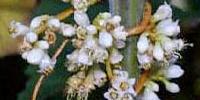
Golden Thread - Ayla's contraceptive.
 Inconsistencies in the EC books
Inconsistencies in the EC books
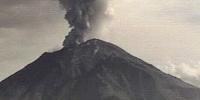
Geology for Earth Children fans

An evening with Jean M. Auel - Various interviews with Jean M. Auel, talks by her, memories of talks by Jean.
 First Cave (South), the Most Ancient Sacred Site, Chapter 27 - 28 Land of Painted Caves
First Cave (South), the Most Ancient Sacred Site, Chapter 27 - 28 Land of Painted Caves Seventh Cave South, Chapter 21 Land of Painted Caves
Seventh Cave South, Chapter 21 Land of Painted Caves















 Inconsistencies in the EC books
Inconsistencies in the EC books
 Maps of the Earth's Children Series including a map of Journeys in the Land of Painted Caves, the last book in the series.
Maps of the Earth's Children Series including a map of Journeys in the Land of Painted Caves, the last book in the series.  Amelana's Cave
Amelana's Cave  Fourth Cave South, Chapter 20 Land of Painted Caves
Fourth Cave South, Chapter 20 Land of Painted Caves Mammoth Cave Chapter 14 Land of Painted Caves
Mammoth Cave Chapter 14 Land of Painted Caves


 Lepenski Vir - a mesolithic site on the Donau. While this is not the exact site as described by Auel, it is in the same general area as the Sharamudoi, who consist of the Shamudoi and the Ramudoi. The Shamudoi live on the land, while the Ramudoi live on floating docks moored to the shore of the Great Mother River, and ply their boats up and down the Danube in the region known as the Iron Gates Gorge.
Lepenski Vir - a mesolithic site on the Donau. While this is not the exact site as described by Auel, it is in the same general area as the Sharamudoi, who consist of the Shamudoi and the Ramudoi. The Shamudoi live on the land, while the Ramudoi live on floating docks moored to the shore of the Great Mother River, and ply their boats up and down the Danube in the region known as the Iron Gates Gorge. 
